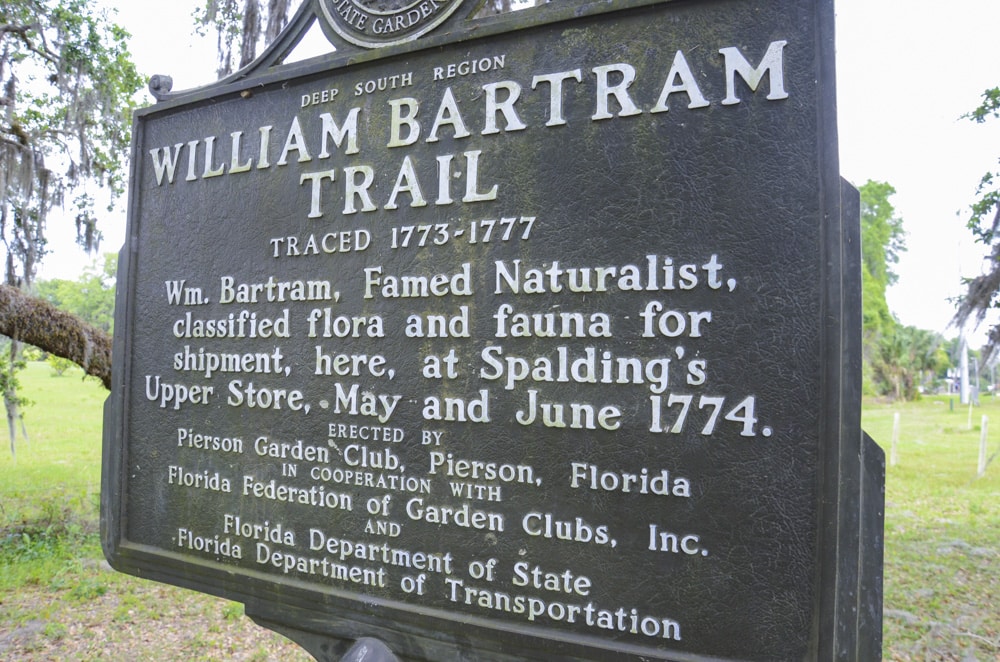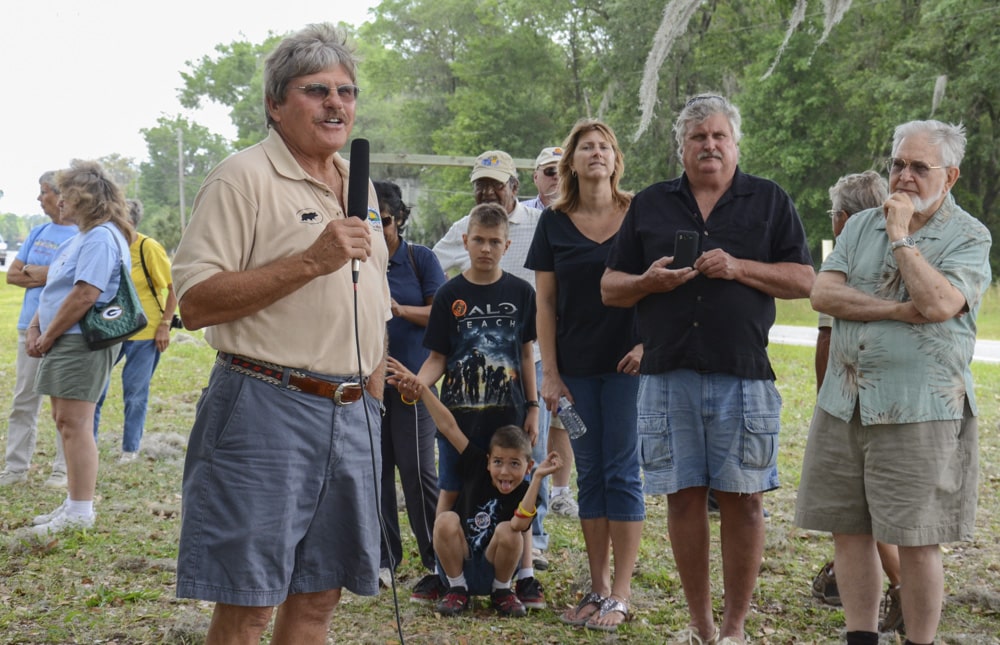Did you know that William Bartram “camped” along the Florida Black Bear Scenic Byway? Yes, it was in May 1774! There was no Byway, no Ocala National Forest, no stores, no banks – just luscious vegetation, lovely trees on the bluffs of a 310- mile St. Johns River. Bartram’s travels through Florida were significant as he described and often named the fauna and flora and wrote about his adventures with Native Americans and the untamed tropical forests of Florida
The location where Bartram’s team set up camp is in Volusia County on the northeast side of the SR40 bridge over the St. Johns where a large live oak (Quercus virginiana) is still standing and in good health. From tree measurements, this live oak is approximately 310 years old. When Bartram staged his party next to the tree, this live oak would have been 61 years old and offered plenty of shade. It was a convenient location which was close to Spalding’s Upper Store for supplies. Today this location is Astor, Florida.

As Bartram made his travels up and down the St. Johns, he wrote about his adventures. One of the most memorable events was when a wolf stole his fish as Bartram slept. That may have been intended for his breakfast the next morning! It was also common for his boat to be jostled and threatened by alligators. Historians say that he had a “little sailboat.” While exploring the St. Johns River south of present-day Astor, he wrote that the alligators were present in such incredible numbers that one could “walk” across the River, from shore to shore “stepping” across gators!
During his great adventures, Bartram had various encounters with Native American Tribes. While describing the flora and fauna, he encountered a Seminole Indian in the forest. Bartram was frightened and didn’t know what to do. He extended his hand in friendship and the tension was diffused. As Bartram explained in his words, the Seminole Indian said, “white man, thou art my enemy, and thou and thy brethren may have killed mine; … thou art now alone and in my power. Live; the Great Spirit forbids me to touch thy life; go to thy brethren and tell they thou sawest an Indian in the forests who knew how to be humane and compassionate.” Both men went their separate ways. Bartram noted in his writings that the American Indians might not benefit from European civilization in America. As history has shown, he was correct. Bartram always felt responsible for the Indians’ needs, and gained respect from many of the Native American tribes. He was given the name Puc-Puggy, which means “Flower Hunter” in the Seminole language.
In history, William Bartram is known as an American botanist, ornithologist, natural historian, and explorer. However, he was much more than just a naturalist. He was compassionate, concerned for the environment and a person ahead of his time.
We think William Bartram would be proud of our National Scenic Byway and the values of maintaining a heathy ecosystem and educating travelers on our rich flora and fauna.
To quote Bartram, “if we bestow but a very little attention to the economy of the animal creation, we shall find manifest examples of premeditation, perseverance, resolution, and consummate artifice in order to affect their purpose.”
Jim Thorsen is chair of Florida Black Bear Scenic Byway. He retired in 2005 from the USDA Forest Service after serving in several National Forests in the Southern Region. He last served as District Ranger on the Seminole Ranger District, Ocala National Forest in Umatilla, Florida. He currently works as a Forest Resources Consultant.
